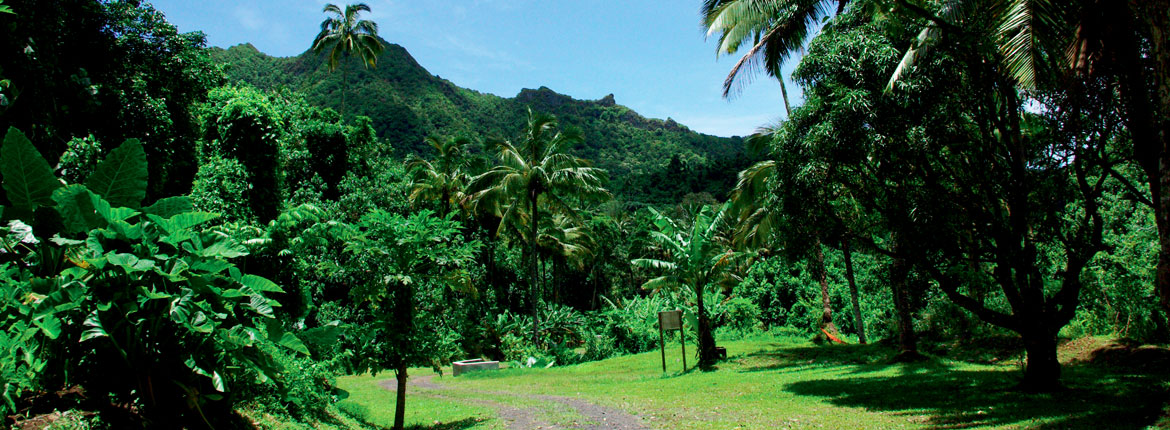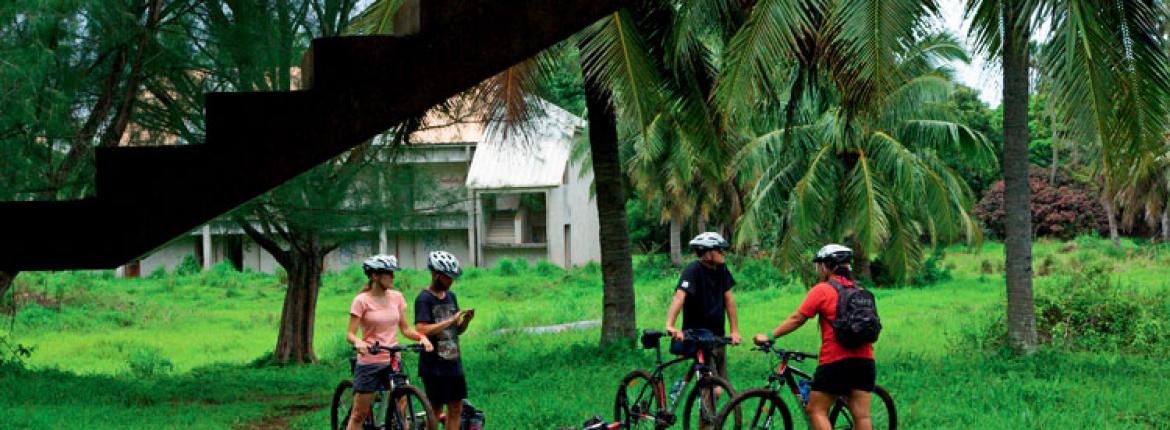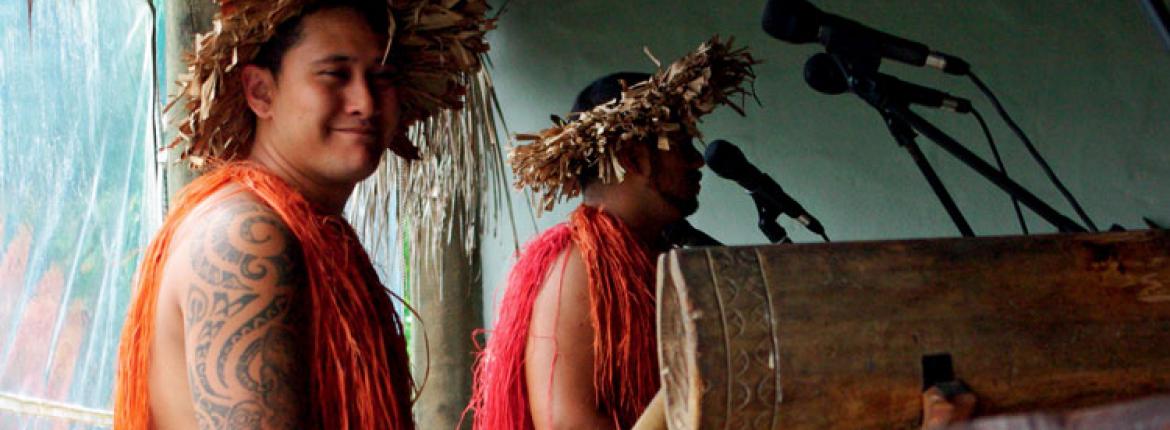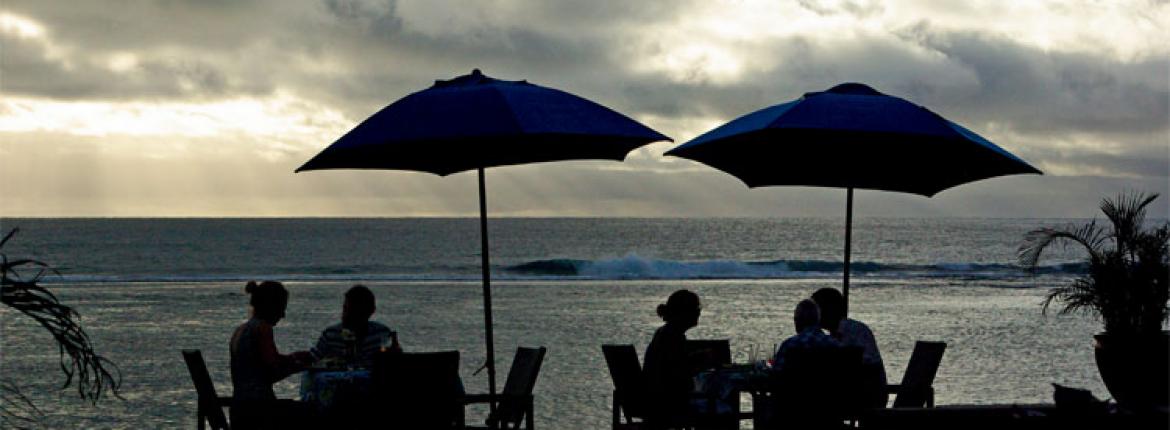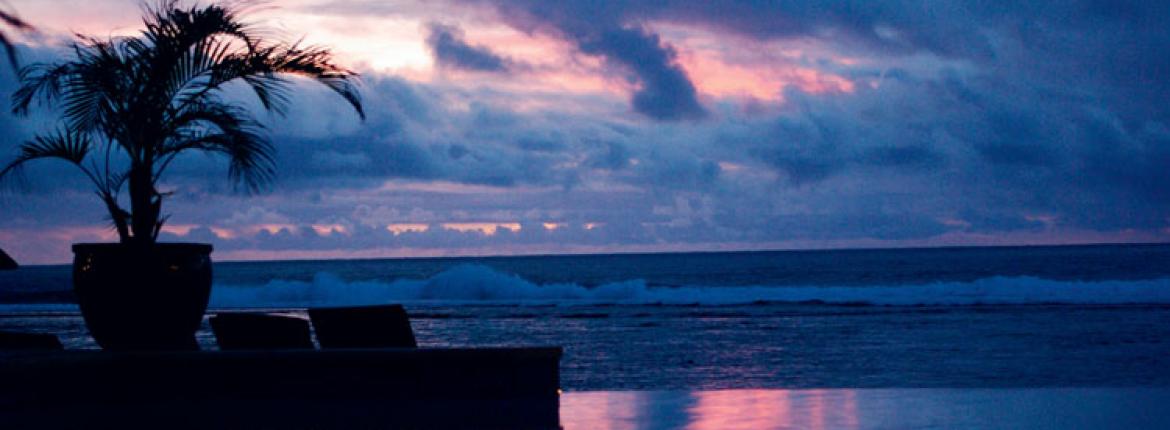Leaving Rarotonga was sad. Partly because the day had dawned clear and hot and I wanted to be swimming, not boarding a plane back to cold old Auckland; partly because there was a man at the airport playing sad farewell songs on his ukulele.
Music had greeted us, too. Cheery, light-hearted tunes: the perfect sound- track for the scene we were stepping into, with its wall of warm, frangipani-scented night air, its bustle of taxis and transfer vans, and a frisson in the crowd of arrivals knowing they’d successfully escaped to another season.
Soon we were ensconced in a holiday home just above high tide at Titikaveka, with a lagoon sparkling in the moonlight and the sound of surf on the distant reef lulling our dreams.
We were sleeping on the southeast coast of Rarotonga, half way around the island from the airport, near a good snorkelling spot and a short drive from Muri with its restaurants and cafes. Everywhere is fairly close in Rarotonga, though. A circuit in the rental car, with plenty of stops and distractions, took an hour and a bit. That was driving slowly, as everyone does.
One diversion we took, and then decided to come back to later in the day, was to Highland Paradise, a mountain-high piece of land with glorious views that’s been restored and maintained by a local tribe.
Intricate, complicated drumming created a high-energy shimmer in the room.
We were welcomed with ceremony onto a rocky marae tucked under a canopy of big, old trees and told the site’s stories and of the significance of the sacred mountain watching over us. Then we filed into an airy hall for a feast and a show. Intricate, complicated drumming created a high-energy shimmer in the room.
Dancers, dressed in bright, multi-coloured costumes, their movements exaggerated with strategically attached feathery extensions to hips and calves and heads, exuded vitality. Singers and story-tellers revealed layers of history and pulled threads of mystery, insight and humour into the room. It was a generous experience. We drove down the dark, narrow mountain road to the coast at the end of the night with a better understanding of the land we were on.
Keen for more stories, we signed up for a few hours’ biking with Storytellers Eco-Cycle Tours. With Rebecca in the lead and Octavia in the rear, a small band of us pedalled back roads, stopping under a kapok tree for a quick lesson in natural insect repellent, banana growing and pig keeping. Whilst eating slithers of wind-fall mango, we learnt about the navigation trees. We picked our way through rows of baby pineapples to nab some low-hanging oranges; further down the road we pulled sweet berries from a laden tree and stopped again for a deep lung full of gardenia blossom scent. At a taro patch we watched for tiny fish in the wet ditches.
Children’s singing rang clear across a school’s back field. Hens with flocks of chicks, tethered goats, fat pigs and slobbering dogs braved the midday sun. We rode single file past road repair machinery and men placing traffic cones, leaning on shovels, peering into pot holes. One guy, holding a water-divining tool, walked a straight line; he was looking for the pipes, he said.
It was a glorious moment, that plunge out of the hot day into the freshwater cold.
Hearing what it’s like to live here, how families manage, how people relate to the land and to each other, would have been the highlight of this tour, but there was more to come.
Up a rough road, through a patch of bush to a small stream, we followed the leader up a rocky path to a small, deep pool under a waterfall. It was a glorious moment, that plunge out of the hot day into the freshwater cold. Revived, we cycled back to the coast to a piece of shade and a picnic lunch: homemade pies, sweet potato chunky chips and salads made by Rebecca’s aunt.
She probably grew the vegetables for our salads, but if she had an excess, chances are Aunty was at the Saturday morning Pananga Nui markets, where everyone seems to be, stocking up on fresh food, craft, clothing and souvenirs. It is a hum of colour and noise.
In the afternoon, peace descended. We found our way to the colourful Maire Nui gardens, where tropical plants shone luminous and vivid. It was warm, despite rain, so we headed back to our holiday home and pushed the kayaks out from under the deck into the lagoon. The water was still and coral and fish were clearly visible. Inspired, we donned snorkels and masks. It was fun, but more satisfying the following day, when we joined Captain Tama’s Lagoon Cruise that took us out to a marine reserve.
There, fish were unafraid of human intruders. Bright blue, peachy orange, striped, spotted, snouty and frilly, the fish came in so many shapes and shades that it was almost comical. Funny, too, were the crew who were adept at managing and encouraging swimmers of varying confidence and hosted lunch on an offshore island with lashings of charm.
After a couple of nights at the self-contained Hawaiki Villas, we switched to a low-key resort for a different experience; settling into Manuia Beach Resort, with its infinity pool, sandy-floored beach-side restaurant and shady gardens, all of which we turned our backs on each evening to watch brilliant sunsets.
Cocktails in hand, of course.
With the honeymooners, the English couple on their way around the world and the Australians away from the kids for the first time, we stood watching the sun go down, marvelling at the riot of colour in the sky. In the low light, the hibiscus flowers glowed. We talked about our days, recommending tours, beaches, coffee options, restaurants. We agreed, it’s an extremely easy place to be.
Reported by Kate Forrest for our AA Directions Autumn 2024 issue

